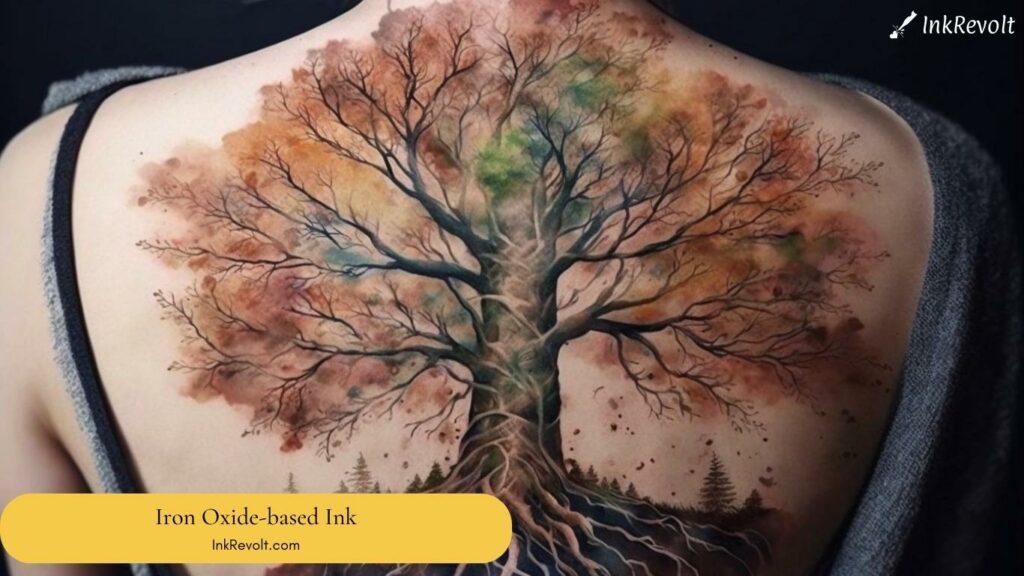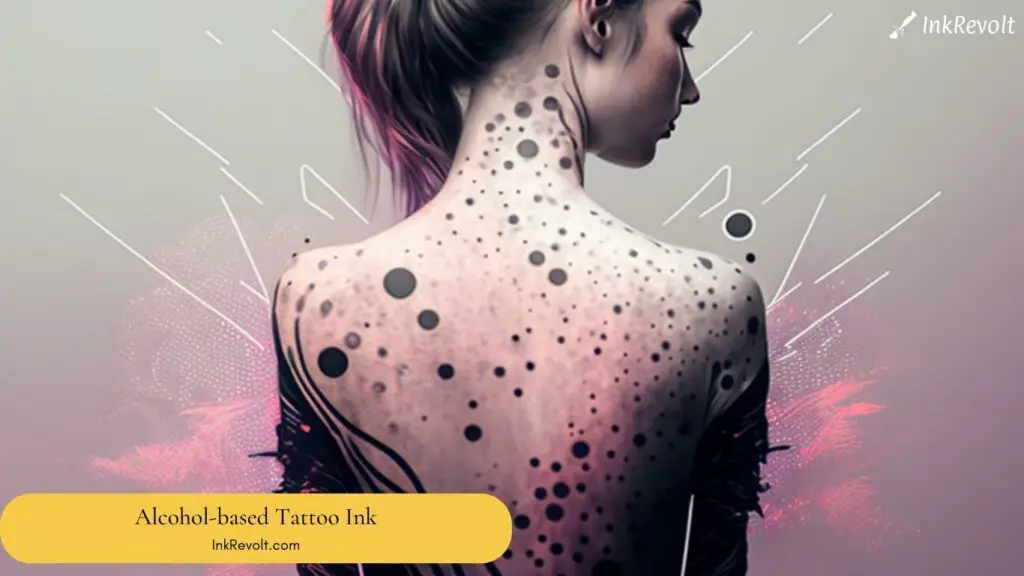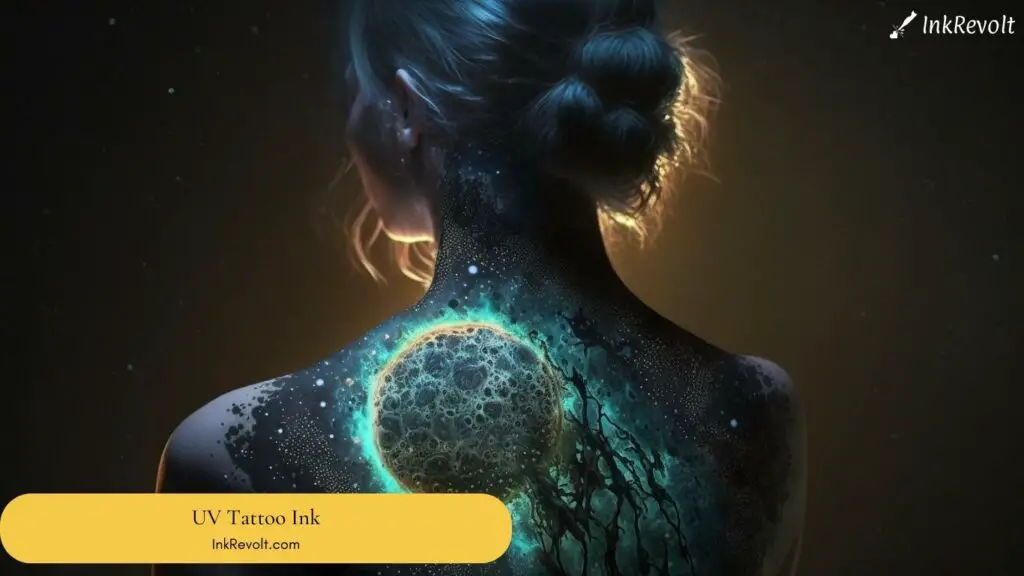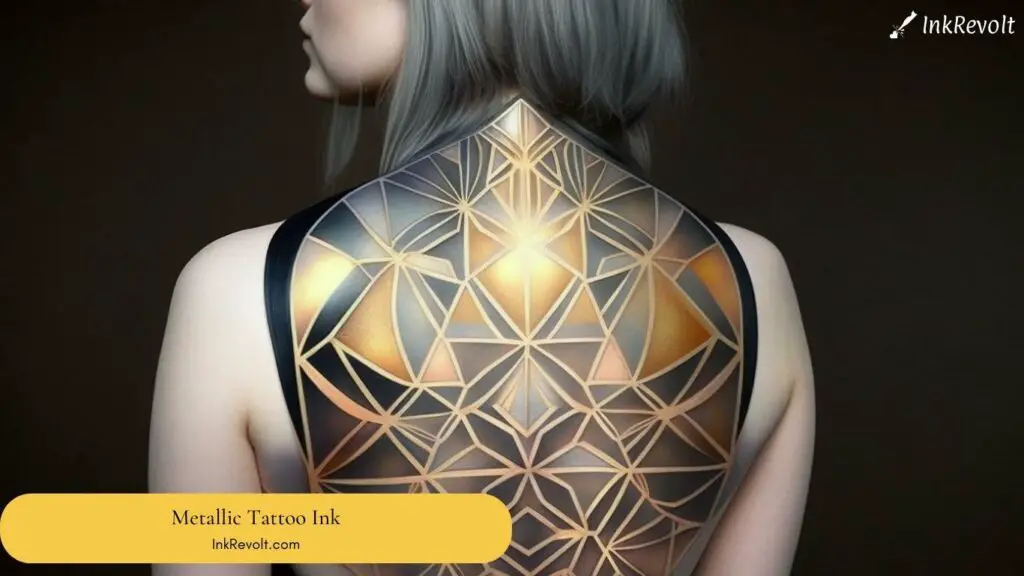Exploring Different Types of Tattoo Ink: A Comprehensive Guide
Getting a tattoo is a major decision, and one that requires careful consideration. One of the most important factors to consider when getting a tattoo is the type of ink that will be used. There are a variety of different types of tattoo ink available, each with its own unique set of characteristics and pros and cons.
In this article, we will explore the different types of tattoo ink, as well as specialty inks like metallic ink and glow-in-the-dark. We will also provide information on how to choose the right ink for your needs and safety precautions to keep in mind.
Definition of Tattoo Ink
Tattoo ink is a liquid substance that is used to create permanent designs on the skin. It is typically made up of a mixture of pigments and carrier fluids that help to distribute the ink evenly under the skin.
Brief History of Tattoo Ink
Tattooing has been practiced for thousands of years, and the ink used to create tattoos has evolved over time. Early tattoo inks were made from a variety of materials, including soot, charcoal, and even urine. In the 19th century, the first commercially available tattoo ink was introduced, made from a mixture of carbon and water.
Today, there are a variety of different types of tattoo ink available, each with its own unique set of characteristics and benefits.
Traditional Tattoo Inks
Traditional tattoo inks are some of the oldest and most commonly used inks in the tattoo industry. They are typically made from natural ingredients and have been used for centuries to create intricate and long-lasting tattoos.
1. Carbon-based Ink

Carbon-based ink is one of the most popular types of traditional tattoo ink. It is made from a mixture of carbon black and water or alcohol, and is known for its deep, rich black color. Carbon-based ink is easy to work with and is suitable for a wide range of skin types.
Composition and Characteristics
Carbon-based ink is made from a mixture of carbon black and water or alcohol. The carbon black is a fine powder that is suspended in the liquid carrier, which helps to distribute the ink evenly under the skin.
Carbon-based ink is known for its deep, rich black color, which is long-lasting and fades very little over time. It is easy to work with, and is suitable for a wide range of skin types, making it a popular choice among tattoo artists.
Pros and Cons
Some of the advantages of carbon-based ink include:
- Produces a deep, rich black color
- Easy to work with
- Suitable for a wide range of skin types
Some of the disadvantages of carbon-based ink include:
- May cause allergic reactions in some individuals
- Can be difficult to remove if you change your mind about your tattoo
- May fade over time, especially if not properly cared for.
2. Iron Oxide-based Ink

Iron oxide-based ink, also known as rust-based ink, is another popular type of traditional tattoo ink. It is made from a mixture of iron oxide pigments, which are derived from minerals like rust and hematite, and a liquid carrier. Iron oxide-based ink is known for its earthy, natural color and is often used to create brown, red, and orange hues.
Composition and Characteristics
Iron oxide-based ink is made from a mixture of iron oxide pigments and a liquid carrier, such as water or alcohol. The iron oxide pigments are derived from minerals like rust and hematite, and are ground into a fine powder before being added to the liquid carrier.
Iron oxide-based ink is known for its earthy, natural color, and is often used to create brown, red, and orange hues. It is also long-lasting and is less likely to fade over time compared to other types of traditional tattoo inks.
Pros and Cons
Some of the advantages of iron oxide-based ink include:
- Creates earthy, natural colors
- Long-lasting and less likely to fade over time
- Suitable for a wide range of skin types
Some of the disadvantages of iron oxide-based ink include:
- Can be difficult to remove if you change your mind about your tattoo
- May cause allergic reactions in some individuals
- May not be as versatile as other types of tattoo ink
3. Vegetable-based Ink

Vegetable-based ink, also known as plant-based ink, is made from natural ingredients like fruits, vegetables, and flowers. It is a popular choice for people who are looking for a more natural and organic option for their tattoos.
Composition and Characteristics
Vegetable-based ink is made from a mixture of natural ingredients like fruits, vegetables, and flowers, and a liquid carrier, such as water or alcohol. The specific ingredients used can vary depending on the desired color and hue.
Vegetable-based ink is known for its natural and organic color, and is a popular choice for people who are looking for a more natural option for their tattoos. It is also less likely to cause allergic reactions compared to other types of tattoo ink.
Pros and Cons
Some of the advantages of vegetable-based ink include:
- Made from natural ingredients
- Less likely to cause allergic reactions
- Can create a unique, natural look
Some of the disadvantages of vegetable-based ink include:
- May not be as long-lasting as other types of tattoo ink
- May not be suitable for all skin types
- Can be difficult to find and may be more expensive compared to other types of tattoo ink.
Modern Tattoo Inks
In addition to traditional tattoo inks, there is also a variety of modern tattoo inks available that have their own unique characteristics and use different ingredients. These inks have been developed over the years to address some of the limitations of traditional inks, and to provide tattoo artists with new options for creating vibrant and long-lasting tattoos.
1. Acrylic-based Ink

Acrylic-based ink is a type of modern tattoo ink that is made from acrylic resin and pigments. It is known for its bright, vibrant colors and is often used in large pieces or for color work.
Composition and Characteristics
Acrylic-based ink is made from a mixture of acrylic resin and pigments. The acrylic resin is a type of plastic that helps the ink adhere to the skin and creates a durable, long-lasting tattoo.
Acrylic-based ink is known for its bright, vibrant colors, which are long-lasting and fade very little over time. It is also easy to work with and is suitable for a wide range of skin types.
Pros and Cons
Some of the advantages of acrylic-based ink include:
- Produces bright, vibrant colors
- Long-lasting and fade-resistant
- Suitable for a wide range of skin types
Some of the disadvantages of acrylic-based ink include:
- May cause allergic reactions in some individuals
- Can be difficult to remove if you change your mind about your tattoo
- Requires a skilled artist to use effectively
2. Alcohol-based Ink

Alcohol-based ink is a type of modern tattoo ink that is made from a mixture of alcohol and pigments. It is known for its fast-drying formula and is often used in color work and large pieces.
Composition and Characteristics
Alcohol-based ink is made from a mixture of alcohol and pigments. The alcohol helps the ink dry quickly, making it easier for artists to work with and reducing the risk of smudging or smearing.
Alcohol-based ink is known for its fast-drying formula, which makes it a popular choice for color work and large pieces. It is also long-lasting and is less likely to fade over time compared to some other types of tattoo ink.
Pros and Cons
Some of the advantages of alcohol-based ink include:
- Fast-drying formula
- Long-lasting and fade-resistant
- Suitable for a wide range of skin types
Some of the disadvantages of alcohol-based ink include:
- Can cause skin irritation or allergic reactions in some individuals.
- Can be difficult to remove if you change your mind about your tattoo
- Requires a skilled artist to use effectively
3. Water-based Ink

Water-based ink is a type of modern tattoo ink that is made from a mixture of water and pigments. It is known for its subtle, natural-looking colors and is often used for delicate, intricate work.
Composition and Characteristics
Water-based ink is made from a mixture of water and pigments. The water helps to distribute the ink evenly under the skin and creates a subtle, natural-looking color.
Water-based ink is known for its subtle, natural-looking colors, which are long-lasting and fade very little over time. It is also easy to work with and is suitable for delicate, intricate work.
Pros and Cons
Some of the advantages of water-based ink include:
- Produces subtle, natural-looking colors
- Long-lasting and fade-resistant
- Suitable for delicate, intricate work
Some of the disadvantages of water-based ink include:
- Can be more difficult to work with compared to other types of tattoo ink
- May cause skin irritation or allergic reactions in some individuals.
- Can be difficult to remove if you change your mind about your tattoo.
Specialty Tattoo Inks
In addition to traditional and modern tattoo inks, there are also specialty inks available that can add unique elements to your tattoo. These inks use special ingredients that create effects like glowing in the dark, changing colors under UV light, or adding a metallic sheen to your design.
1. Glow-in-the-Dark Ink

Glow-in-the-dark ink is a type of specialty tattoo ink that contains a phosphorescent substance that glows in the dark. It is a popular choice for people who want to add a unique and eye-catching element to their tattoo.
Composition and Characteristics
Glow-in-the-dark ink is made from a mixture of phosphorescent powder and a liquid carrier, such as water or alcohol. The phosphorescent powder absorbs light and then emits it back out, creating a glowing effect in the dark.
Glow-in-the-dark ink can create a striking effect in low light environments, but may appear less vibrant in normal light. It is also less common than other types of tattoo ink and may be more difficult to find.
Pros and Cons
Some of the advantages of glow-in-the-dark ink include:
- Creates a unique and eye-catching effect
- Can be a great conversation starter
- Can add another dimension to your tattoo design
Some of the disadvantages of glow-in-the-dark ink include:
- May not be as visible in normal light
- May not be suitable for all tattoo designs or styles
- May not be as long-lasting as other types of tattoo ink
2. UV Tattoo Ink

UV ink, also known as black light ink, is a type of specialty tattoo ink that is invisible under normal light but glows under UV light. It is a popular choice for people who want a hidden tattoo that only becomes visible in certain environments.
Composition and Characteristics
UV ink is made from a mixture of fluorescent pigments and a liquid carrier, such as water or alcohol. The fluorescent pigments are invisible under normal light, but glow brightly under UV light.
UV ink can create a unique and hidden effect, but may appear less vibrant in normal light. It is also less common than other types of tattoo ink and may be more difficult to find.
Pros and Cons
Some of the advantages of UV ink include:
- Creates a hidden tattoo that is only visible in certain environments.
- Can be a fun and unique way to express yourself
- Can add another layer of meaning to your tattoo design
Some of the disadvantages of UV ink include:
- May not be as visible in normal light
- May not be suitable for all tattoo designs or styles
- May not be as long-lasting as other types of tattoo ink.
3. Metallic Ink

Metallic ink is a type of specialty tattoo ink that contains metallic particles, giving it a shiny, reflective finish. It is a popular choice for people who want a tattoo that stands out and catches the light.
Composition and Characteristics
Metallic ink is made from a mixture of metallic particles and a liquid carrier, such as water or alcohol. The metallic particles create a shiny, reflective finish that can add depth and dimension to your tattoo design.
Metallic ink can create a striking effect, but may be less versatile than other types of tattoo ink. It is also less common than other types of tattoo ink and may be more difficult to find.
Pros and Cons
Some of the advantages of metallic ink include:
- Creates a striking and eye-catching effect
- Can add depth and dimension to your tattoo design
- Can be a great way to make your tattoo stand out
Some of the disadvantages of metallic ink include:
- May not be suitable for all tattoo designs or styles
- May not be as long-lasting as other types of tattoo ink
Choosing the Right Ink
Choosing the right ink for your tattoo is an important decision that can affect the quality and longevity of your tattoo. When choosing a tattoo ink, there are a variety of factors to consider, including color, composition, skin type, and allergies.
Factors to Consider
Color
The color of the ink is an important factor to consider when choosing a tattoo ink. Some inks are better suited for creating certain colors or hues, while others may be more versatile and can create a wider range of colors.
Read Next: How to make home-made colored tattoo ink
Composition
The composition of the ink is also important to consider. Some inks are made from natural ingredients, while others use synthetic or chemical compounds. It is important to choose an ink that is safe and non-toxic, and to be aware of any potential side effects or allergic reactions.
Skin Type
Different types of ink may work better on different skin types. For example, some inks may be more suitable for oily or dry skin, while others may be more versatile and can work on a wider range of skin types.
Allergies
If you have a history of skin allergies or reactions, it is important to choose an ink that is hypoallergenic and safe for your skin. It is also a good idea to test a small patch of skin before getting a larger tattoo to ensure that you do not have an adverse reaction.
Safety Precautions
When getting a tattoo, it is important to take proper safety precautions to ensure that you are not at risk for infection or other complications. Some important safety precautions to keep in mind include:
FDA Regulations
Make sure that the ink you choose is FDA-approved and meets all safety standards. The FDA regulates tattoo ink as a cosmetic, and requires that all inks be made from non-toxic ingredients.
Sterilization
Make sure that your tattoo artist uses sterile equipment and follows proper hygiene and sterilization procedures. This can help to prevent the spread of infections and other complications.
Aftercare
Proper aftercare is also important to ensure that your tattoo heals properly and does not become infected. Follow your artist’s aftercare instructions carefully, and keep your tattoo clean and protected during the healing process.
Wrapping Up
Choosing the right ink for your tattoo is an important decision that can have a significant impact on the quality and longevity of your tattoo. In this article, we explored the different types of tattoo ink, including traditional, modern, and specialty inks, as well as factors to consider when choosing an ink and safety precautions to keep in mind.
When choosing an ink, it is important to consider your individual needs and preferences, as well as safety and hygiene. By taking proper precautions and choosing the right ink, you can ensure that your tattoo is a beautiful and lasting work of art.
Future of Tattoo Ink
The field of tattoo ink is constantly evolving, with new technologies and ingredients being developed all the time. In the future, we can expect to see even more options for tattoo inks, with new colors, effects, and safety features.
As the popularity of tattoos continues to grow, it is important to stay informed and up-to-date on the latest advancements in tattoo ink and technology. By doing so, you can make sure that you are getting the best possible ink for your tattoo and ensuring that it will be a beautiful and long-lasting work of art.
